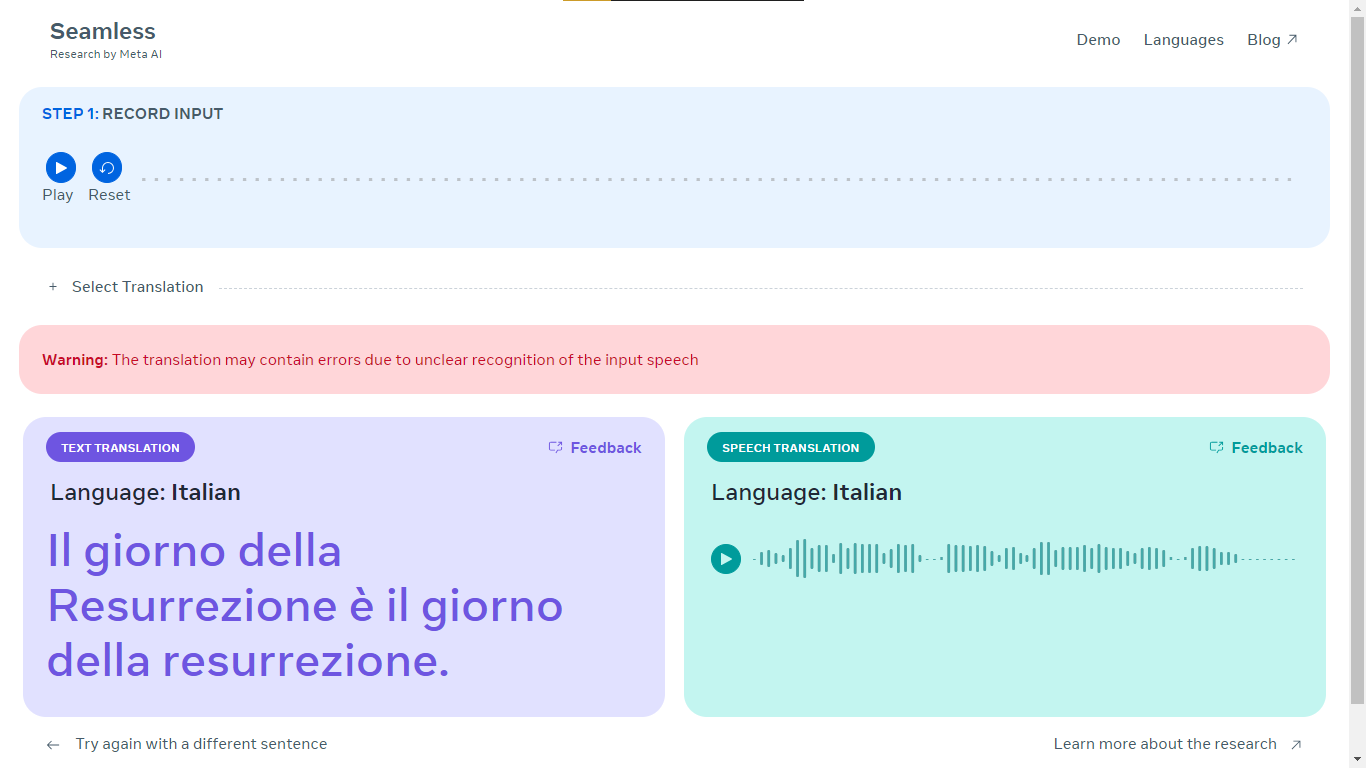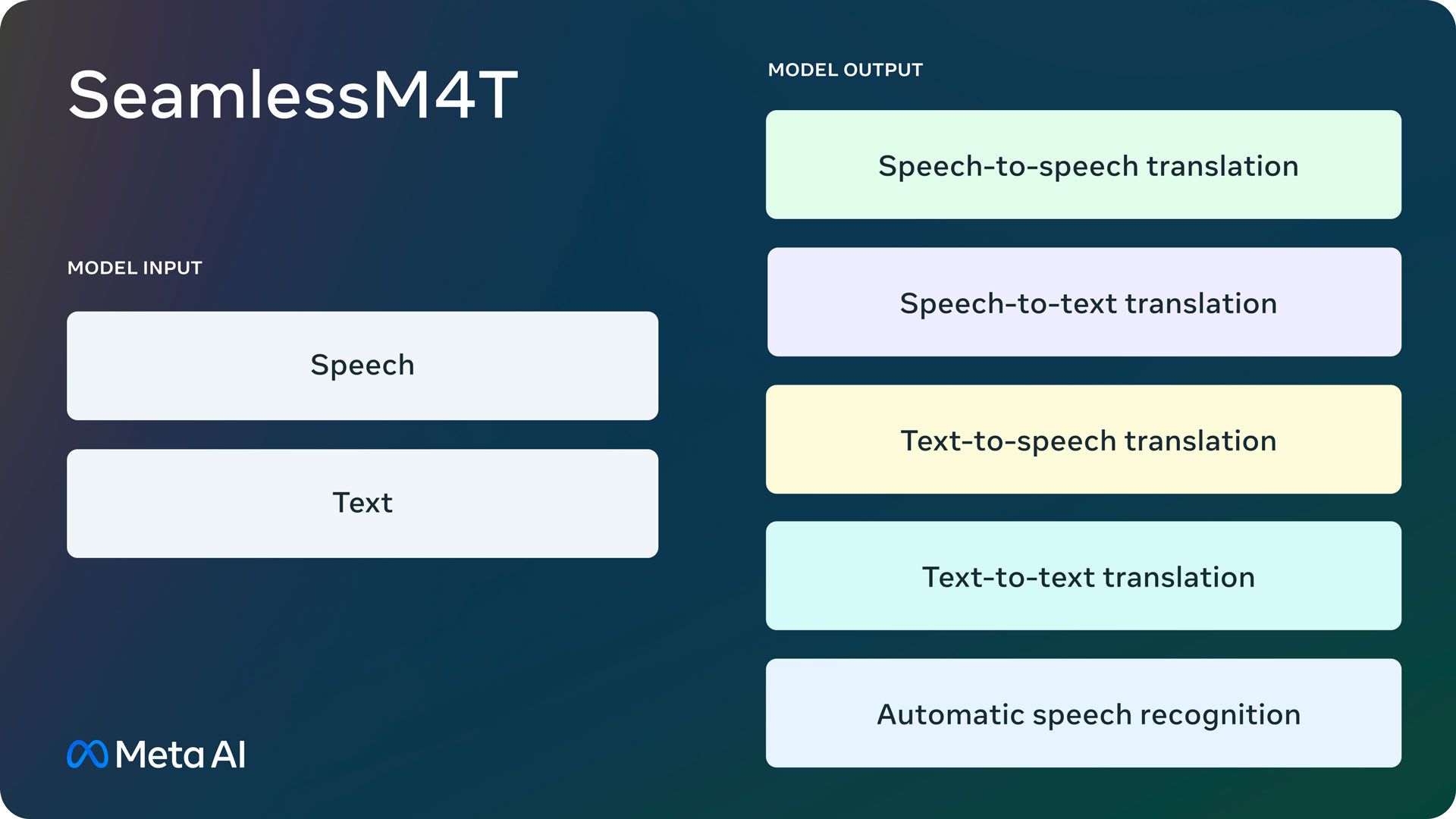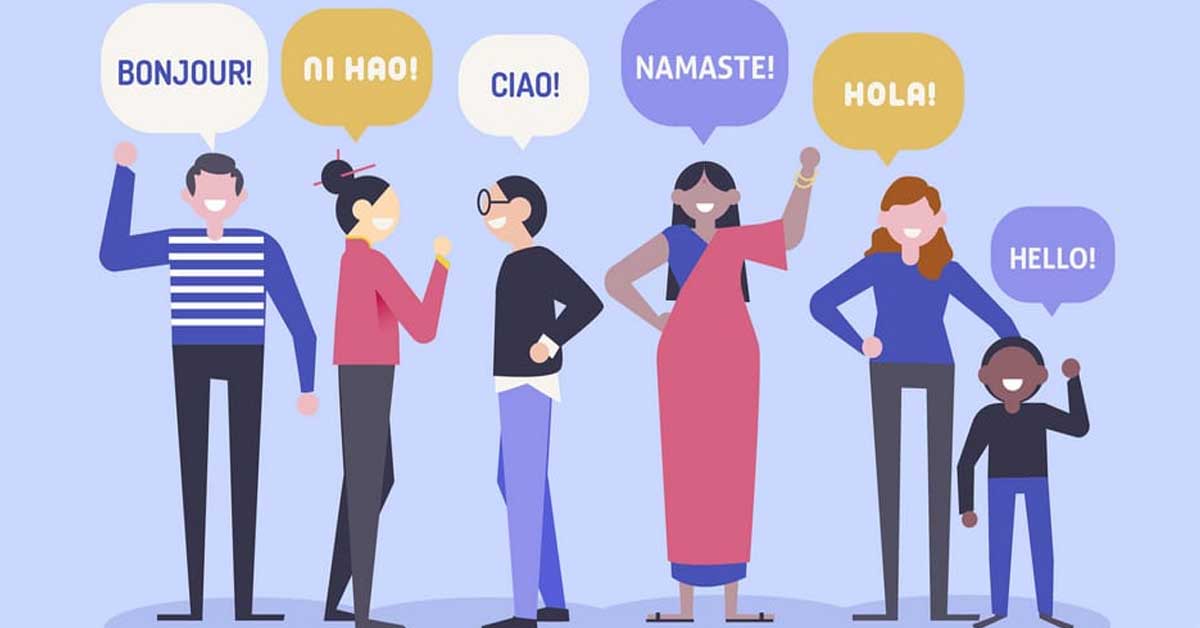Meta, the tech trailblazer, has just introduced its latest marvel, SeamlessM4T. This AI powerhouse is designed to perform dual roles—translating and transcribing 100 languages, whether in written form or spoken expression.
In its mission to foster a world that's connected and open to all, Meta presents SeamlessM4T as a game-changing language barrier conqueror. Things like SeamlessM4T will facilitate seamless conversations among people speaking different languages, and it will help people to get closer by communicating better.

Notably, SeamlessM4T boasts a distinct feature—it can effortlessly identify the languages spoken, bypassing the need for a separate language identification tool.
SeamlessM4T emerges as a successor to Meta's earlier AI undertakings, including projects like "No Language Left Behind" and "Universal Speech Translator." Remarkably, this new innovation builds upon the foundations of "Massively Multilingual Speech," a framework by Meta that empowers it to recognize speech, identify languages, and even synthesize speech across a staggering range of 1,100 languages.


Meta is not alone in artificial intelligence translation and speech-to-text conversion game; other big players like Amazon, Microsoft, OpenAI, and several new companies also participate.
Even Google is in on the scene with its big plan called the "Universal Speech Model." This model aims to tackle a thousand different languages all at once. And remember about Mozilla! They're doing their thing with their Common Voice project, trying to make those automatic speech recognition systems as perfect as possible.

Creating SeamlessM4T was a meticulous journey. Meta meticulously amassed vast troves of publicly available text and speech data from the web. This treasure trove, dubbed "SeamlessAlign," served as the bedrock for SeamlessM4T's training.
The researchers meticulously aligned hours of spoken content with corresponding written text. This immersive process nurtured SeamlessM4T's proficiency in tasks like transcribing spoken words into text, translating text, generating speech from written text, and even translating words between different languages.
In the realm of speech-to-text tasks, SeamlessM4T reigns supreme. It stands head and shoulders above its peers, unfazed by background disturbances and speaker idiosyncrasies. This supremacy owes itself to the rich blend of speech and text data ingrained within its training. While other models grapple with either speech or text, SeamlessM4T elegantly juggles both, conferring it a unique edge.
As the world of AI keeps on growing and changing, it's super important to shine a light on something we might not always notice—biases. Even super-powerful tools like SeamlessM4T aren't completely free from them.
Certain AI-driven translation models, including our star player, exhibit tendencies to lean toward masculine forms while translating neutral terms. This quirk traces back to the data on which these models are trained, signaling a gender bias in the underlying material.
Addressing another challenge—undesirable content—SeamlessM4T treads with caution. While it endeavors to minimize toxic language, there are instances where it might inadvertently generate translations that are offensive or harmful.
It's crucial to note that the translations occasionally touch on sensitive matters like social status, cultural nuances, sexual orientation, and religion. While a toxicity filter is in place for public demos, it's important to bear in mind that perfection is still a work in progress.
In spite of AI's strides, there's a distinct flavor that only human interpreters can infuse into their translations. These interpreters bring a human touch, introducing subtle choices that result in a tapestry of diverse translations—an aspect that AI might find challenging to replicate. While AI excels in precision, it might inadvertently trade the vivid variety of human translation for its accuracy.
But remember, when it comes to stuff that needs extra care, like private info or legal situations, it's good to play it safe. Even the coolest tech has its boundaries, you know?
Sources: about.fb.com / ai.meta.com / github.com













